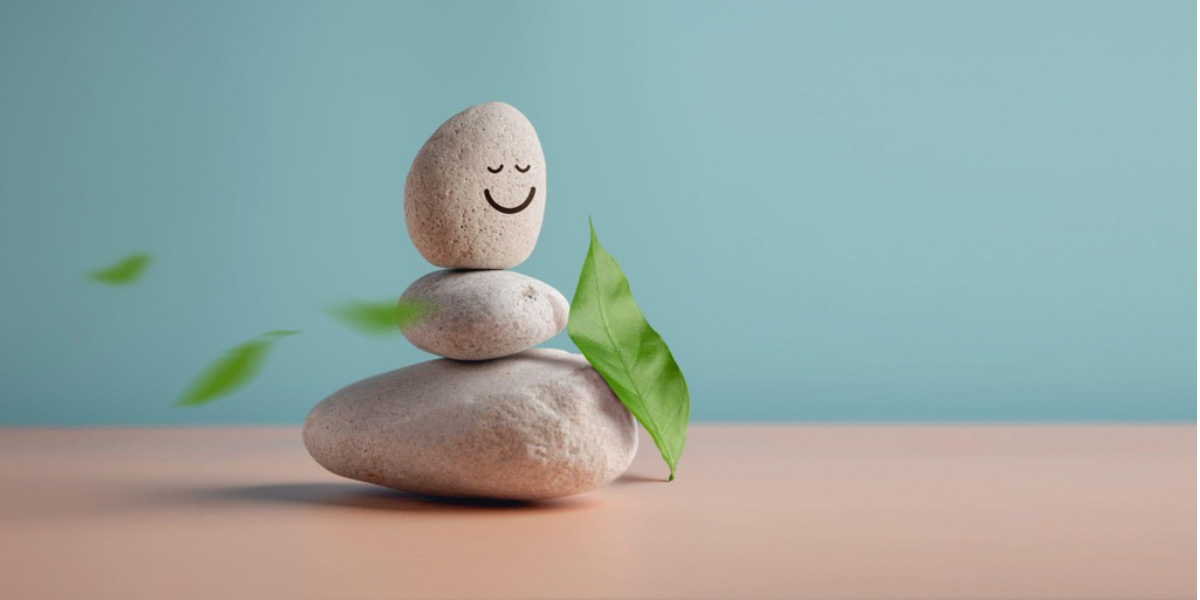Mindfulness 101: Getting Started
If you’re unfamiliar with mindfulness techniques, the practice and its goals—awareness, insight, calmness—might sound unattainable. But practicing mindfulness is a simple exercise, and it’s something that can have a major impact on your feelings, your motivation, and your emotional well–being.
Ready for your very own Mindfulness 101 course?
Here’s an overview of mindfulness, meditation, and the most popular exercises for incorporating mindful techniques into your daily life.
What Does Practicing Mindfulness Mean?
Mindfulness is the simple practice of paying attention to your thoughts and emotions and trying to fully experience the present moment.
At its core, mindfulness helps you pause the endless loop of reactions and take control of your thoughts and emotions for a chance to recenter yourself and gain control over your feelings.
Mindfulness focuses on 4 primary things:
- Attention
- Physical sensations
- The world around you
- Acceptance
While being mindful involves a combination of focus and enough discipline to develop a habit, it is not a rigorous activity.
Your focus doesn’t have to be intense or stressful. In fact, it should be far from stressful. There is no success or failure when practicing mindfulness. The goal is not to do it correctly; the goal is simply to do it because in the process itself is where the benefits lie.
Benefits of Practicing Mindfulness
It’s all well and good that mindfulness sounds like a relatively easy thing to try, but what good is it in your life?
Mindful thinking can help out in a few different areas, both major and minor.
Managing Stress
You’ve probably read that mindfulness helps reduce stress, but the truth is that mindfulness isn’t a cure for stress. Stress comes from external sources, and mindfulness is an internal practice.
However, mindfulness may help you better manage stress by increasing acceptance of things you can’t control and helping you more calmly evaluate what needs to be done for a task.
In addition, practicing mindfulness may help you identify the sources of your stress, letting you avoid or limit exposure to it.
Handling Your Responsibilities
Related to this is examining your responsibilities and how they make you feel. You’re not making an inventory, but you can notice how you feel when your thoughts drift to one responsibility or another while you’re practicing mindfulness. Does it cause you to feel tense, hopeless, or excited?
Noticing and acknowledging these feelings can give you insights into the effects your responsibilities have on your mind and body. These insights may help you better manage your responsibilities in the future by giving you the ability to prepare for how you’ll feel when it comes time to do them.
Acknowledging Your Achievements
It’s all too easy to move from day to day, working hard and striving toward goals, only to miss your small and large achievements along the way.
Practicing mindfulness is an opportunity to take time for yourself. As part of that, you can try to redirect your thoughts from overwhelming tasks and goals to past successes and achievements.
Recognizing that you’ve accomplished something before may also help reduce the feelings of nervousness or fear you feel about a similar upcoming task.
If a goal constantly seems out of reach, you might start to feel like you’re failing. Being mindful of your progress in terms of small achievements along the way can change your perspective and may spark the motivation you need to keep pushing.
Being Aware of Feelings, Thoughts, and Emotions
Understanding your own thoughts and emotions is more difficult than it might sound.
But practicing mindfulness and focusing on what’s happening in your mind may lead to a better understanding of what makes you feel a certain way, how to change that reaction, and how you might handle emotional responses differently in the future.
Practicing mindfulness trains you to be more in tune with your thoughts and emotions and the way they relate to the world around you.
By placing awareness on external stimuli without judging yourself or the many distractions that make up each passing moment, mindfulness may help open the door to new interpretations, new perspectives, and less reactive behavior.
Mindfulness vs. Meditation: What’s the Difference?
While the terms “mindfulness” and “meditation” are often used interchangeably, there are slight differences between them. Meditation often refers to the act of meditating, while mindfulness places more emphasis on your general mindset and attitude. Some people also consider mindfulness a type of meditation.
Strictly speaking, you don’t have to meditate, sitting cross-legged on a pillow with fragrant candles flickering nearby, to practice mindfulness.
You can incorporate some of your favorite activities, from stretching and walking to drawing and journaling, into your mindfulness routine. Whichever activity you choose, focus on being mindful of your feelings, physical sensations, and your drifting thoughts as you do it.
How to Practice Mindfulness
You don’t have to program specific activities into your day to achieve mindfulness; it’s a mindset that you can hold onto throughout the day. In fact, it’s best to try to keep a mindful attitude toward yourself and the world around you instead of restricting it to specific meditation exercises.
But for some people, especially when this concept is new, it can be difficult to cultivate mindful awareness without specifically engaging in mindfulness activities.
Mindfulness techniques can take many forms, but one of the most common is mindfulness meditation. By focusing on your breathing and your thoughts, even as your mind wanders, you’ll discover that you can simply accept intruding thoughts and, after noticing them, come back to the present moment.
If you’re new to mindfulness, explore this selection of mindfulness techniques to find one that you’d like to try and start there. You can always try other techniques later.
1. Seated Meditation
Seated meditation is often what people think of first when they hear about mindfulness. Seated meditation is the simple practice of sitting still and quiet.

To do this exercise, find a comfortable chair or a place on the floor in a quiet area. For added comfort during longer sessions, use a back support pad or seat cushion.
Try to maintain good posture, keeping your upper body straight. Close your eyes and focus on your breathing and the physical sensation of your lungs filling and emptying.
Your thoughts will naturally drift to other places or be distracted by the environment around you. That’s a normal part of mindfulness, and the key is to notice when it happens. Then, gently return focus to your breathing and your body.3
Do this for a few minutes or as long as you feel comfortable.
2. Body Scans
Body scan meditation involves focusing on different parts of your body one at a time, typically starting with your feet and moving upward to your head. During a body scan, you should try to pay attention to the sensations of each body part as you focus on it, noticing how it feels and where it touches the floor, chair, or your clothing.
Breathe steadily and try to relax your muscles, releasing tension from your body. Then, notice your feet making contact with the floor. If you’re wearing shoes or socks, notice the pressure against your feet. Note the temperature of the floor, and any texture you feel, and any other physical sensations.
Then, move upward to the next body part.2 Consider using a white noise machine to help block out some distractions and focus on your body.
3. Guided Meditations
During guided meditations, a guide (someone who’s either pre-recorded, streaming live, or in-person) will gently lead you through a mindfulness meditation exercise. The guide will speak quietly, reminding you to focus on your breathing, notice physical sensations, and pass no judgment on your thoughts and emotions.
Whether through headphones or at an in-person group session, guided meditation can be a fantastic way for beginners to get started on their mindfulness journeys.
While it’s not exactly accurate to say that a guide is going to teach mindfulness, they can help you learn to notice and explore your thoughts and reactions with an accepting attitude.
It’s still up to you to willingly adopt a mindful mindset but hearing a guide’s voice can help you stay engaged with the exercise and remind you of what you’re doing.
How to Get Better at Mindfulness
There’s no single way to get better at mindfulness, and it’s difficult to talk about “getting better” at all since there’s no success stage to reach.
One important goal you can put into words, though, is to commit to making mindfulness a habit.
Remember that mindfulness is not about forcing your mind to focus or instituting a rigid meditation regimen. Instead, mindfulness is a gentle, simple practice that can be as simple as adjusting your worldview to be more accepting of each moment.
You don’t have to block out 30 minutes or an hour for guided meditations. You can make mindfulness an ongoing part of your life by paying more attention to your feelings as you go about your day and noticing how the things around you affect you.
The best way to practice mindfulness techniques and become more comfortable with mindfulness meditation is simply to do it.
Mindfulness Is About the Journey
Practicing mindful meditation can help you cultivate mindful thoughts throughout each day, whether you’re enjoying quiet time or responding to stressful events and responsibilities.
The effects of mindfulness are gradual and deeply personal, but they can give you a better understanding of yourself, your accomplishments, and your goals.
Medical Disclaimer: This content is provided for informational purposes only and not intended to be a substitute for professional medical advice, diagnosis or treatment.
Sources





